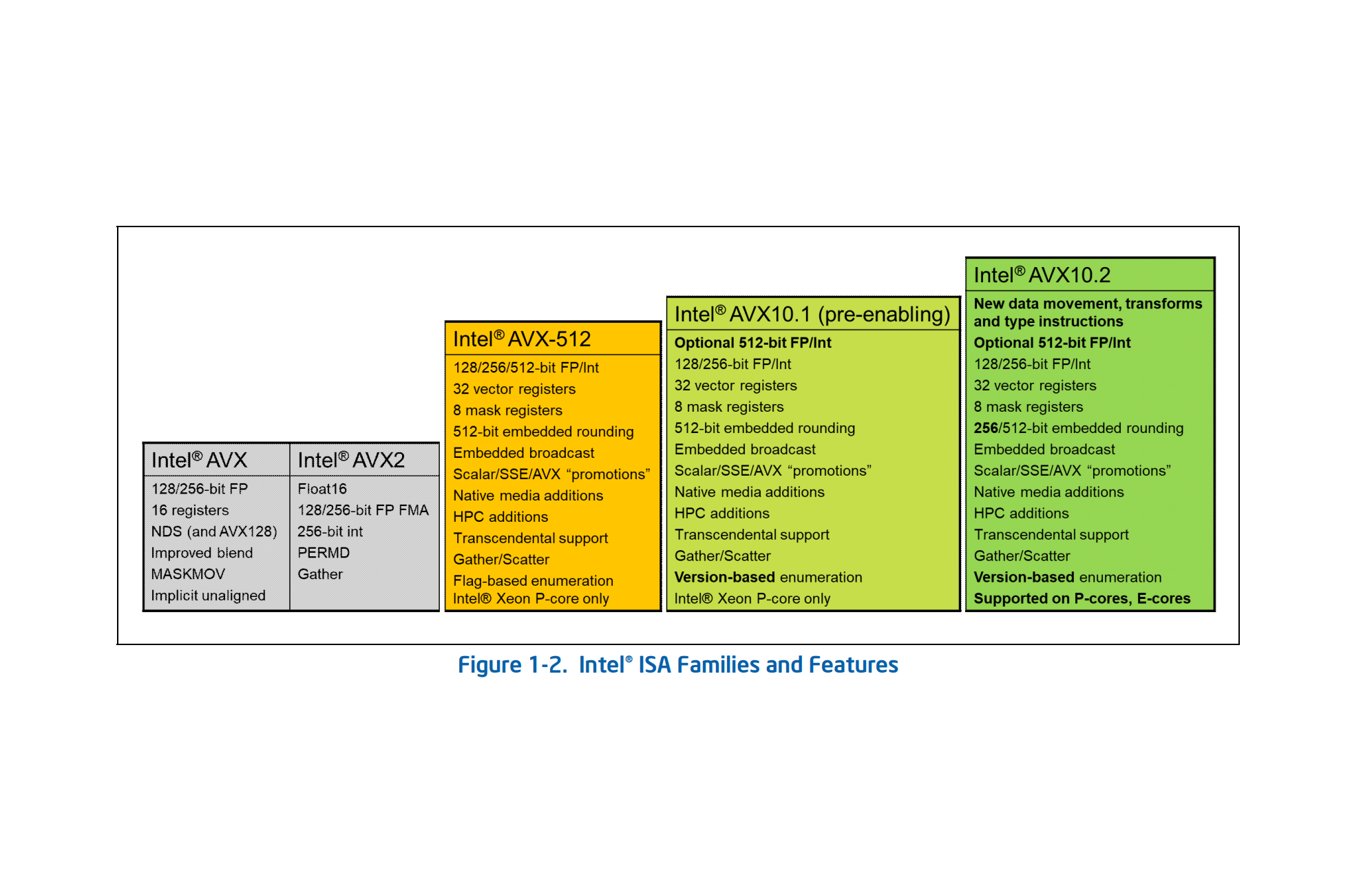
Intel's previously-announced Advanced Vector Extensions 10 (AVX10) and Advanced Performance Extensions (APX) are now making their way to Intel's own "Clear Linux" distro, according to a report from Phoronix. Clear Linux is aimed at Linux developers who want the highest degree of Intel hardware optimizations under an optimized Linux environment, and is maintained in-house at Intel. Interested users can snag it from the main Clear Linux site, though this is not a distribution intended for mainstream usage.
According to Phoronix, proper implementation of AVX10.1 won't be seen until the launch of Granite Rapids later this year, where they speculate that APX may also come with the new CPUs (though this is still unconfirmed). The two features being initially presented side-by-side and added into Clear Linux simultaneously with this update suggest this is a possibility, though.
Patching in support this far ahead of release should mean that Intel will have plenty of time to test the new hardware under Clear Linux before end users and professionals need to start relying on it as a daily driver. As long as Intel does its due diligence, this bodes well for the next generation of Intel hardware under Linux— which is already faring surprisingly well with the recent release of Meteor Lake, particularly on the iGPU side of things.
According to the original Clear Linux Community Forum post made three days ago, this update will offer APX and AVX10 in a bundle of compiled software, and surface in releases "later this week." In the future, this implementation of AVX10 will allow AVX-512 applications to run across both Intel's P-Cores and E-Cores, among other improvements. This should lead to some considerable improvements on Intel CPUs that adopt the new hybrid design.
Intel APX, meanwhile, doubles general-purpose registers from 16 to 32 and allows APX-compiled code to run with 10% fewer loads and 20% fewer stores than Intel 64's baseline. This will mainly serve to improve efficiency, and can also serve as a method of boosting AI performance, according to Intel's documentation.







